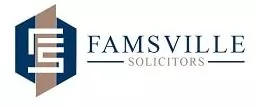INTRODUCTION
Copyright infringement basically entails the violation and piracy of an author's exclusive right through the unauthorised use of a copyrighted work. It is imperative that creatives differentiate their work from another author of designated works, otherwise the same will amount to an infringement.
Section 15 of the Nigerian Copyright Act ("NCA")1 set out various acts which constitutes infringement of copyright and it includes the unauthorised doing of acts in respect of which the copyright owner has been accorded exclusive rights as well as various dealings, usually of a commercial nature, in infringing copies of copyright works. The acts which constitute infringement include the unauthorised making, copying or reproduction, publication, public performance, distribution, broadcast and adaptation of the work.2 The doing of any of these acts without the consent of the copyright owner constitutes infringement unless such act falls within the scope of the exceptions from copyright control.3
This article aims at identifying and providing how to prove copyright infringement in a protected work.
TECHNIQUES USED TO IDENTIFY COPYRIGHT INFRINGEMENT
The NCA provides for certain acts which are exclusively reserved for the copyright owner4 and the unauthorised usage of such acts would be regarded as an infringement of copyright. Thus, it is essential that a person who intends to use the work of another must obtain an authorisation by way of assignment or license in order to escape the penalty of the law.
It is pertinent to state that the claimant in a copyright infringement suit must satisfy the Court that:
- Copyright subsists in the work allegedly infringed;5
- Ownership of copyright in the work is vested in the claimant being a direct owner or by virtue of being an assignee or licensee of copyright in the work;6
- The defendant has done an act, in relation to the work which is exclusive to the claimant; and
- The defendant has no authority to do the act complained of.
While the claimant has the onus to prove the first three (3) requirements to the Court, the onus shifts to the defendant in the last requirement to prove to the Court that he was authorised to carry out the act complained of by the claimant, or the act is within the ambit of the exemptions provided by the law under the Second Schedule to the NCA.
The defendant may further rely on the defence of independence creation which has been seen to be an excuse under the copyright law. In the case of Mag Jewelry Co. Inc v Target Corporation, Style Accessories Inc, Cherokee Inc, & Robert Margolis,7 where the Claimant brought an action for infringement against the Defendants. The defendants denied copying of "Angel Design" and claimed that their jewelry was based on an identical design independently created by a third party who was a designer and who Style purchased the Angel design necklace from. At trial, the Court concluded that Mag had failed to establish that Style had copied its Angel Design since Style's design was adopted from the Designer's independent creation. On appeal, the Court affirmed the decision of the trial Court and held that Mag was unable to convince the Court that the trial Judge had erred in finding that the Designer had independently created his design and that Style had copied that design, not the Plaintiff's design. Thus, the Plaintiff was unsuccessful in his appeal and the defence of independence creation prevailed.
In addition to the above requirements, the claimant in proving his/her claims may rely on the following techniques:
1. Access and Similarity
The claimant is expected to prove through direct evidence that the defendant consciously used and had access to the work during the course of his creative processes. Such access may be inferred, for example, by showing that the defendant had the claimant's book on his shelf; or a movie or song was widely performed in areas and at times that would make it highly likely that the defendant had seen or heard it.8
Establishing direct evidence that the defendant accessed the work of the claimant is somewhat difficult to prove in infringement cases. However, the claimant may rely on causal connection between the two works and such can only be deduced from the fact that the claimant's work preceded that of the defendant, and the defendant had the opportunity of knowing the claimant's work. Reference may therefore be made to the date of publication. In the case of CBS Inc & Ors v Intermagnetic Co. Ltd & Anor,9 the Court stated that causal connection did not have to be between their respective works, as the works printed by the defendants were exact replicas of the claimant's works, which were earlier in time and as such held that the defendants were liable for copyright infringement in the claimant works.
Furthermore, the claimant may demonstrate sufficient similarity between the defendant and the claimant's work to make plagiarism more likely than independent creation. The determinant to sufficient similarity is viewed from the eye of an average man or ordinary observer and not an expert in the field of art/literature. Despite the recourse to an ordinary man, it does not oust the testimony of an expert witness in determining sufficient similarity. An expert opinion is therefore consulted as a guide in framing the ultimate judgment.
2. Substantial Taking
Having established the first technique, the claimant must prove that a substantial part of his work was taken and this is measured both qualitatively and quantitatively. It must be noted that a small piece of a work may still amount to substantial taking so long as such is sufficiently important to the claimant's work. The key word here is "substantial" and such depends much more on the quality than on the quantity of what has been taken by the defendant.10 For example, in the case of Hawkes & Sons (London) Ltd v Paramount Film Service Ltd,11 a twenty second portion of a four-minute music was held to amount to substantial copying.
Finally, the claimant must prove that the work copied has some copyrightable expression and not merely an idea. This is because ideas are not protected but only an expression of those ideas are being protected under the NCA.
CONCLUSION
It is imperative for a claimant in a copyright infringement suit to identify, prove using various techniques to establish that a defendant has infringed on his/her copyrighted work, and not merely made an independent creation of his own work. A proper understanding of the steps to take and what is required would guide the claimant in discharging this obligation. The claimant must have met the basic requirement of originality and fixation by ensuring that his work is protected by copyright, otherwise his claim might be futile before the Court.
Footnotes
1. Cap C28 LFN 2004.
2. A. O. Oyewunmi, Nigerian Law of Intellectual Property ((University of Lagos Press and Bookshop Ltd, 2015)
3. Ibid.
4. Section 6 of the NCA.
5. Section 43 (a) of NCA.
6. Section 43 (b) of NCA.
7. Nos. 06-1556, 06-2127.
8. Copyrightx Lecture Transcripts- Based on the Lectures of Prof. William W. Fisher III, Harvard Law School, Compiled by Marc Pelteret, student of Copyrightx: UCT 2017. Accessed on 14 June 2021.
9. (1977-1989) 2 IPLR. 351.
10. Ladbroke (Football) Ltd v. William Hill (Football Ltd) (1964) 1 WLR 273 at 276.
11. (1934) 1 Ch 593.
The content of this article is intended to provide a general guide to the subject matter. Specialist advice should be sought about your specific circumstances.


